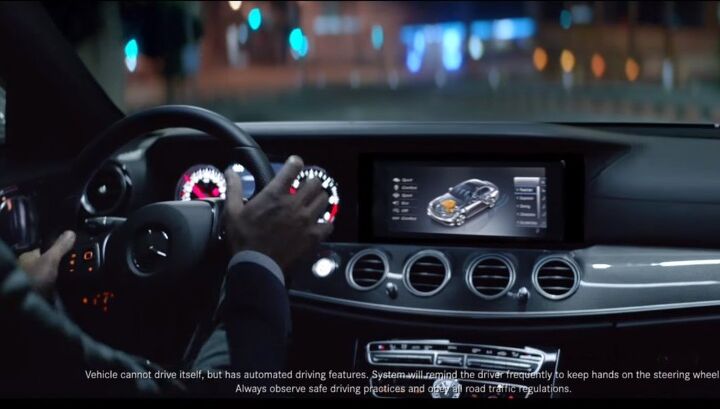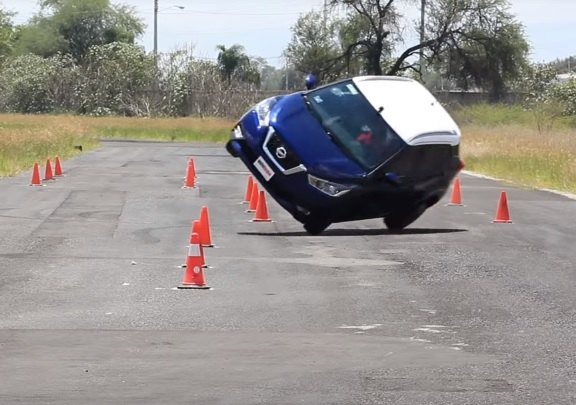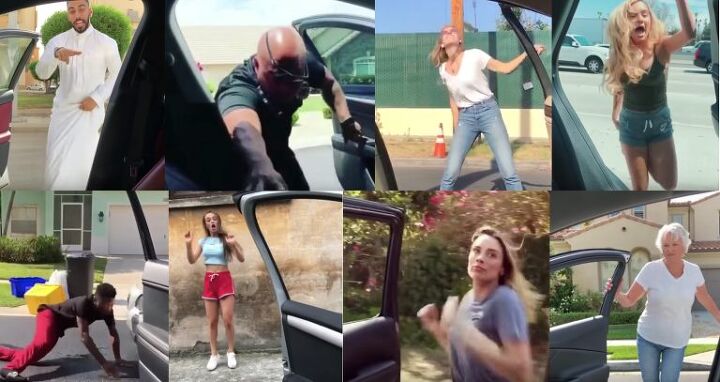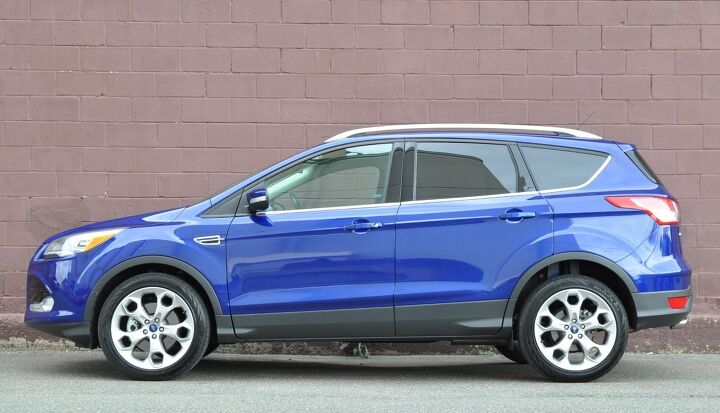#Safety
How Safe Is Level 2 Autonomy? As Safe as the Automaker Makes It
No longer content with just crashing vehicles into walls or poles, the Insurance Institute for Highway Safety has turned its attention to the ever-expanding buffet of new technologies found in today’s automobiles. Driver assistance features ease the driver’s workload and make for comfortable highway cruising, but all systems aren’t made equal.
For its test of “Level 2” autonomous features — meaning, specifically, adaptive cruise control (ACC) and active lane-holding — IIHS selected five premium four-doors. The test group consisted of a 2017 BMW 5 Series with Driving Assistant Plus, a 2017 Mercedes-Benz E-Class with Drive Pilot, a 2018 Tesla Model 3 and 2016 Model S equipped with Autopilot, and a 2018 Volvo S90 with Pilot Assist. Given that each model garnered a “superior” IIHS score for automatic emergency braking, they seemed like choice candidates for a comparison test.
The results, as you’d probably expect, were a mixed bag. We’re not at the technological finish line yet; not by a long shot.
Be Thankful the U.S.-Market Nissan Kicks Has Standard Stability Control
A reader sent us a link to a Mexican handling test of Nissan’s new, front-drive Kicks crossover, and one glimpse of the vehicle’s “moose test” will have you on your knees, thanking the deity of your choice for electronic safety nannies.
We all know that high-riding vehicles suffer from an inherent top-heaviness, born of a high center of gravity and compounded by long suspension travel. As SUVs grew in popularity in the ’90s, a slew of alarming videos arose showing popular SUVs flipping or riding on two wheels while swerving sharply to avoid a object, then recovering. The moose test is the ultimate test of a vehicle’s stability, and it’s the test most likely to see a tall vehicle — thanks to rapid weight transfer — roll more than it yaws. Sometimes with disastrous results.
The advent of electronic stability control was a godsend for these types of vehicles, helping overcome much of the roll and yaw, but, while it’s mandated in the U.S., Canada, and Europe, in some markets it’s absent from certain models or trim levels. Take a look at what happens without it.
Fiat Chrysler Recalling V8s Over Stuck Cruise Control, Sudden Acceleration
If you’re the proud owner of a Hemi-powered Dodge Charger, Challenger, or Chrysler 300, you probably love getting that sweet baby up to highway speeds in a hurry. However, you’re also likely fond of having the ability to stop it whenever you wish and not entering into a real-life version of the movie Speed.
We’ve got some unfortunate news. According to the National Highway Transportation Safety Administration, you might have to take a couple of extra steps to avoid that being a possibility. Fiat Chrysler has issued a recall on 2014-2016 Chrysler 300s, Dodge Chargers, and Dodge Challengers equipped with the 5.7-liter V8 and Mopar Stage 1 Performance Package powertrain control module. The 2018 Challenger SRT Demon is also affected by the recall.
Apparently, the PCM is sick and could screw with the cruise control system. You’ll definitely want to get this one fixed as soon as possible. FCA claims the defect may not just prohibit cruise control from disengaging — there’s also a possibility it could cause the car to accelerate unpredictably. That’s about the last thing you want an 800-horsepower car to do without you giving it the go-ahead.
Here's the Dumbest Thing People Are Doing (With Cars) Right Now
This week, the National Transportation Safety Board issued a statement urging people to stop jumping out of moving vehicles in order to dance. That’s the kind of folksy wisdom we appreciate from the government, but we were curious as to what spurred it.
Apparently, youths everywhere are engaging in a social media challenge where they film themselves dancing to Drake’s new song “In My Feelings” next to their automobile. Hoping to seek some clarity as to why this is happening, we hunted down the music video for the track. This revealed two important things: Drake’s portrayal of a love-fueled killing machine is totally implausible, and the song is not nearly good enough to warrant such behavior.
The new cultural phenomenon is highly reminiscent of — and no less idiotic than — “ Ghost Riding,” which peaked in popularity roughly a decade ago. The only appreciable difference is that the present-day participants actually seem to be taking slightly less risk and aren’t actually required to exit a moving vehicle. Some just just decided to keep the car in motion for the hell of it.
Yet Another Rollaway Recall: Ford Calls Back 550,000 Vehicles for Driverless Journeys
Automatic transmissions that shift into park but don’t actually end up in park are one of the greatest automotive sourges of our time. Of all automakers, Fiat Chrysler and Ford seem to have the worst luck with this.
On Wednesday, Ford Motor Company announced a recall of roughly 550,000 Fusions and Escapes to prevent the vehicles from getting loose, though some wonder why the National Highway Traffic Safety Administration didn’t step in earlier to force the recall.
Should Police Have the Ability to Track and Disable Self-driving Vehicles?
Autonomous vehicles have created an endless series of unanswerable questions. As the technology continues to advance, decisions on how best to implement it have not. We’ve yet to discern who is liable in the event of an accident, how insurance rules would change, if they can coexist effectively with traditional automobiles, how they will impact vehicle ownership in the long term, and the infrastructure necessary to ensure they’ll function as intended.
There’s also a myriad of security concerns involving everything from the very real prospect of vehicle hacking to automakers selling the personal information of drivers. Both of those topics are about to come to a head as automakers continue shifting toward connected vehicles.
In March, the U.S. Transportation Department met with auto industry leaders, consumer advocacy groups, labor unions, and others in an attempt to navigate the minefield that is autonomous integration. The department previously hosted similar roundtable discussions in December after releasing the new federal guidance for automated driving systems, called “ A Vision for Safety 2.0.” That guidance freed up automakers and tech firms to test self-driving vehicles with fewer regulatory hurdles to cope with.
However, the December report seemed to focus mainly on how little everyone outside the industry understands the new technology.
A Safer Route Home, but Is the Customer Always Right?
Depending on who you ask, Uber is either a godsend or a harbinger of civilization’s downfall. When the ride-hailing app went live in my corner of the world, disgruntled taxi drivers threatened violence against Uber drivers found waiting for a fare. I still get in the front seat out of habit. Cab drivers in other cities weren’t happy about their monopoly being threatened, either.
Elsewhere, Uber is a common way for urbanites to get around and, despite a number of past controversies involving the company and its drivers, people seem just fine with its presence. Naturally, for some users, safety remains an issue. But what if you could choose not only the route taken, but also the make and model of the vehicle showing up at your door? If the thought of riding in an old beater turns you off, why not wait until the closest vehicle with a five-star safety rating shows up? A new patent filing shows Uber wants to make that happen.
Uber Driver May Have Been Watching TV Before Fatal Collision: Police
The mash-up of fledgling technology that requires human vigilance to ensure safety and our natural inclination to become distracted by mobile devices appears to be the cause of the fatal Tempe, Arizona Uber crash in March.
According to a lengthy police report obtained by Reuters, the driver of the autonomous Volvo XC90 operated by Uber Technologies may have been watching the TV show The Voice in the moments leading up to the collision. The impact killed 49-year-old Elaine Herzberg, who was crossing the darkened street with her bicycle.
Dulling Down the Sport: FIA Considers Digitized Checkered Flag After F1 Mishap
Over the weekend, model Winnie Harlow mistakenly waved the checkered flag a lap early at otherwise dull Canadian Formula One Grand Prix. While not the first incident of its kind, the error has pushed the FIA into considering the adoption of a digitized checkered flag, leaving the black-and-white banner to serve in a more symbolic capacity.
Apparently, Harlow had been informed by an official that the race was ending and prematurely flew the flag — an understandable mistake on her part.
Sebastian Vettel still nabbed his 50th career grand prix win, despite the confusion. However, there are dangers stemming from accidentally calling a race early that the FIA wants to address. With drivers perpetually plugged into their team via radio headsets, it’s unlikely most would automatically assume the event was over. But risks remain if the pilot of a lead car suddenly assumes victory has been cinched. Bleeding off speed for a victory lap could result in pursuing cars passing or even striking the vehicle.
Take a Look at 2011-2014 Kia and Hyundai Fires, Safety Group Tells NHTSA
Almost all models occasionally burst into flames for one reason or another, but there’s too many older Kia and Hyundai models catching fire to write it off as a statistical inevitability, the Center for Auto Safety says.
In a letter sent to the National Highway Traffic Safety Administration on Monday, the nonprofit advocacy group used owner-submitted questionnaires from the NHTSA’s own website as proof that something’s amiss with certain 2011-2014 Kia and Hyundai models. 120 reported vehicle fires and 229 cases of melted wires in the engine compartment, smoke, or burning odors should be enough to spark an investigation, CAS said.
Two Aging Midsize SUVs Fail Latest Round of Crash Tests
The Insurance Institute for Highway Safety never rests, always thinking up new ways to expose flaws in contemporary passenger vehicles. Lately, the IIHS has begun applying the dreaded small overlap front crash test to the passenger side of new models. There’s a seat on that side for a reason, and it’s not inconceivable that a roadside utility pole or obstruction could take out that corner of the vehicle.
The latest IIHS test put popular midsize crossovers through their paces, exposing serious safety concerns in two models.
Maybe Tesla Vehicles Could Use a Seat-shaker Feature…
Hell, maybe they could use a driver monitoring camera, too. In other words, Cadillac’s Super Cruise system. How else would one react to seeing this video of a Tesla employee apparently dozing behind the wheel of a Model S while flying down a California highway?
The video, uploaded by YouTube user Mike Cagulada and posted on Twitter by Amir Efrati of The Information, was apparently shot near Tesla’s Fremont assembly plant on June 4th. By the looks of it, this driver isn’t bobbing for apples — he or she is asleep.
Kia Recalls 507,000 Cars Over Glitchy Airbags
Following a March investigation by the National Highway Traffic Safety Administration, Kia Motors is recalling more than 507,000 vehicles in the United States to solve an electronic glitch that may prevent airbags from deploying in the event of a collision.
The NHTSA launched the probe after four people died in accidents involving Kia and Hyundai vehicles with airbags that failed to inflate. In total, the agency’s investigation noted failed deployments in the 2011 Hyundai Sonata and 2012-2013 Kia Forte in the U.S. There was also an incident involving the Forte in Canada.
NTSB Report Says Tesla Was Accelerating at Time of Fatal Mountain View Crash
The March 23rd death of a Tesla Model X driver in Mountain View, California prompted the National Transportation Safety Board to probe why the vehicle, driving in Autopilot mode, left its lane and collided with a concrete lane barrier on a clear day. The impact killed 38-year-old Walter Huang, an Apple engineer.
In the wake of the crash, the safety agency booted Tesla from the investigation after the automaker released details relating to the vehicle’s (and victim’s) actions in the moments leading to the crash. We now have the NTSB’s preliminary report on what happened before, during, and after the collision.
Severe Corrosion, Steering Failure Sparks Investigation of Older Mazda 6 Models
Mazda can’t seem to shake a recent history that saw its vehicles fall victim to the flesh-eating disease in embarrassing numbers. We’ve seen corrosion issues crop up in a myriad of recalls issued by the automaker over the past several years, and it’s raised its flaky brown head once again.
This time, it’s just a preliminary investigation, but probes conducted by the National Highway Traffic Safety Administration have a way of turning into recalls in a hurry. The model in question is the 2009-2010 Mazda 6, and the issue is a subframe that can become so corroded, you might have trouble staying on the road.





























Recent Comments